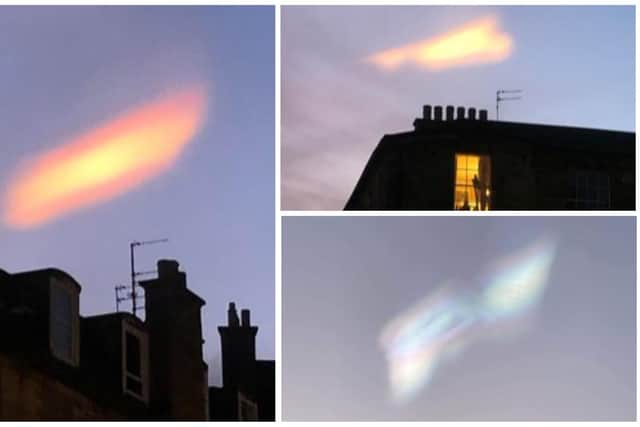Edinburgh photos capture rare ‘mother of pearl’ clouds lighting up city skyline and creating mysterious shapes
and live on Freeview channel 276
Edinburgh locals were treated to the sight of stunning rainbow-coloured clouds in the sky over the city on Tuesday evening.
The rare type of shimmering clouds, called nacreous clouds, were spotted by Evening News readers Kathy Brown and Diane Burton, who shared their stunning photos with us.
Advertisement
Hide AdAdvertisement
Hide AdDue to their iridescent nature, nacreous clouds are commonly referred to as “mother of pearl” clouds. They are usually visible a few hours after sunset or before dawn and appear much brighter than other clouds around them.


According to the Met Office, nacreous clouds form in the lower stratosphere over polar regions when the sun is just below the horizon. The clouds are illuminated from below and often glow in vivid colours and will often remain visible for a couple of hours after sunset and through the night as they are lit by moonlight.
Nacreous clouds form below -78 C temperatures and so are most likely to occur during the polar winter. But there is a dark side to them as well – according to the Australian Antarctic division, nacreous clouds are a major contributing factor in the formation of ozone holes in the Arctic and Antarctic.
The sharp colours of the clouds are a result of their elevation, as they can commonly be found in the lower stratosphere between nine and 16 miles above the surface of the earth.
Comment Guidelines
National World encourages reader discussion on our stories. User feedback, insights and back-and-forth exchanges add a rich layer of context to reporting. Please review our Community Guidelines before commenting.
